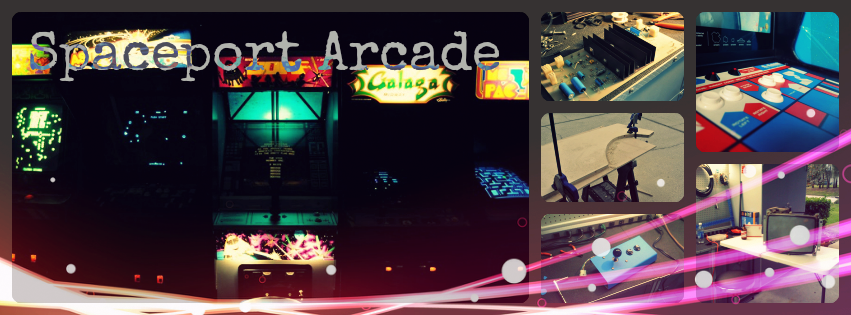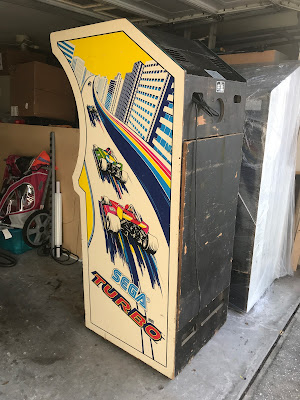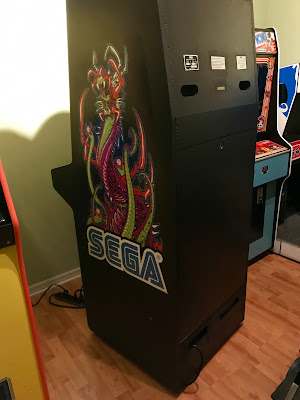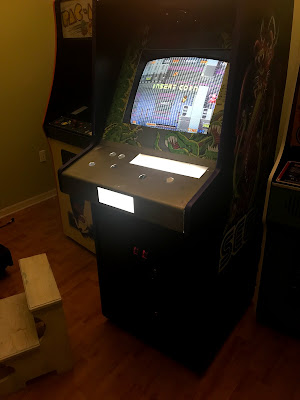As I mentioned, the cabinet is in good condition. The side art is nearly perfect. The control panel is practically free of the usual cigarette burns, and the shift knob is intact. When Sega built this cabinet, it seems they spared no expense. There are dozens of extra little details added that really add to the experience, and make it a great piece for collectors.
The design of the cabinet is brilliant. Rather than the usual marquee, they opted to extend the cabinet upwards and out over the player. This serves to create a more immersive effect, sort of a sudo-cockpit feel. Then they added an LED score board, apart from the monitor, which displays the current top five scores. The control panel is shaped like a dashboard, and they even added a couple of lighted gauges. Perhaps my favorite addition, a 12" woofer adds the deep engine rumble and echo effect when passing through tunnels.
My plans are to clean up the cabinet, leaving it as original as possible.
For starters, the inside will require a serious cleaning. Due to the strong cooling fan, and bottom vent, this game always pulls in mounds of dust. I'll likely begin by vacuuming and brushing up what I can reach. Then remove the monitor for a good washing down, followed by the removal of the wiring harness and all remaining bits.
The 12" woofer, I previously mentioned, has fallen apart with age. The foam surround has gone the way any old foam from 1980 would, it's now part of the dust and garbage in the bottom of the cabinet.
On my last Turbo, the speaker was also damaged in this way, and I replaced it with a new speaker. I was never really happy with that choice. Odd as it may seem, the new speaker just sounded too good. Maybe sounding too good isn't the right choice of words, It sounded like a new speaker, or new technology. What I remember thinking was, "It didn't sound original".
This time I plan to repair the speaker with a foam surround replacement kit. I think this is a good choice, as it will maintain the original look, and with any luck, sound more like the arcade noise of yore.
This cabinet actually has a back door, but upon close inspection, it doesn't seem to be the correct back door. So, again, I'll be making a replacement door, and fitting a lock.
I'll likely replace the power cord, since it's missing the ground pin. Then I'll go through the power supply and amplifier and replace the old capacitors.
The display looks good, and has good color, so I'm on the fence about overhauling the monitor chassis, but it will likely get done when I pull it out for cleaning.
Cosmetically, the cabinet is an A+, but the insides are very dirty, and it has a couple of glitches which I can hopefully iron out.




















































